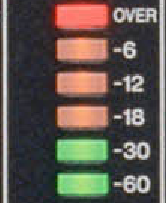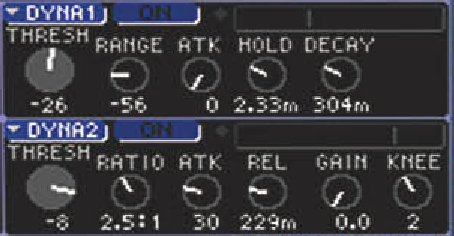SteveMcQueen
Member
Howdy everyone, new guy here.
I have spent the past 2 days on here and the interwebs and can't find exactly the answer I'm looking for.
Details are in my signature.
1.) Gain on mic pack: PGX have a wheel gain right on the pack. This show has the mostly vocally untrained performers whispering, talking, singing, yelling, & screaming. Through the Tech Rehersals, I have had the gain on the pack about 30%, and i crank up the gain at the board, and ride the faders low with the master output a tad low. The director don't want the actors amplified to much on the dialog, but just there for support, and boost them up for the songs. Muted Piano, harp, and guitar is the band at stage right. With this current setup, there isn't much gain, when they are singing, barely hits 30 on the meter, see below.

The end of the big tunes , most actors hit 18 or 12, and the screams sometimes clip, but i mute the mics for that, so I'm not worried about that. Anyway, what should the gain structure be. I have a recording background, so i would add a little compression, and then add the gain, leaving faders at 0. But should the meter peak at singing level, and what should I set the gain on the actual mic pack at? So actors or a lot louder than others, so should i compensate the gain at the board or the mic pack.
2.) Compression: What is the appropriate compression on the Vox. I compress each channel separately. This is my default on my board.

Anyway, since I'm just there for support, I'm thinking more compression is better, but what ratio?
3.) Mic Check: I have never done a mic check with actors before. What is the protocol? Each one is in the space, talks and sings? Have then say a few of their lines and sing a chorus or two? I then adjust the gain, make any adjustments to mic placement? And who puts on the mics. The the tech rehearsals they have been doing them themselves, since this a traveling show, they all know where they want it, and for the most part it has worked. Also are they in costume for Mic Check? I'm sure it depends and there are no hard fast rules like this, but this is my first time in this environment, so any and all advice would be most greatly appreciated. Also any other suggestions about anything would be great. Thank you very much.
I have spent the past 2 days on here and the interwebs and can't find exactly the answer I'm looking for.
Details are in my signature.
1.) Gain on mic pack: PGX have a wheel gain right on the pack. This show has the mostly vocally untrained performers whispering, talking, singing, yelling, & screaming. Through the Tech Rehersals, I have had the gain on the pack about 30%, and i crank up the gain at the board, and ride the faders low with the master output a tad low. The director don't want the actors amplified to much on the dialog, but just there for support, and boost them up for the songs. Muted Piano, harp, and guitar is the band at stage right. With this current setup, there isn't much gain, when they are singing, barely hits 30 on the meter, see below.

The end of the big tunes , most actors hit 18 or 12, and the screams sometimes clip, but i mute the mics for that, so I'm not worried about that. Anyway, what should the gain structure be. I have a recording background, so i would add a little compression, and then add the gain, leaving faders at 0. But should the meter peak at singing level, and what should I set the gain on the actual mic pack at? So actors or a lot louder than others, so should i compensate the gain at the board or the mic pack.
2.) Compression: What is the appropriate compression on the Vox. I compress each channel separately. This is my default on my board.

Anyway, since I'm just there for support, I'm thinking more compression is better, but what ratio?
3.) Mic Check: I have never done a mic check with actors before. What is the protocol? Each one is in the space, talks and sings? Have then say a few of their lines and sing a chorus or two? I then adjust the gain, make any adjustments to mic placement? And who puts on the mics. The the tech rehearsals they have been doing them themselves, since this a traveling show, they all know where they want it, and for the most part it has worked. Also are they in costume for Mic Check? I'm sure it depends and there are no hard fast rules like this, but this is my first time in this environment, so any and all advice would be most greatly appreciated. Also any other suggestions about anything would be great. Thank you very much.
Attachments
Last edited:




